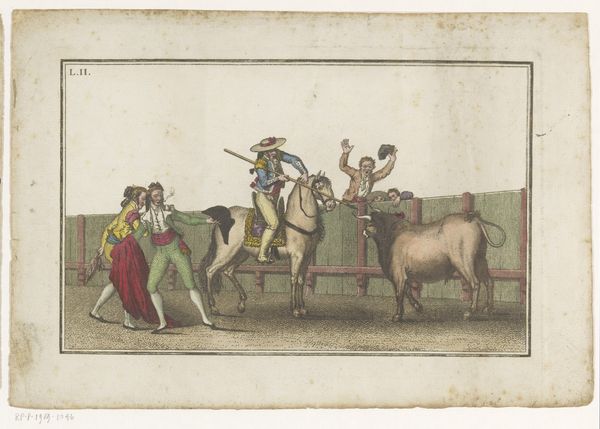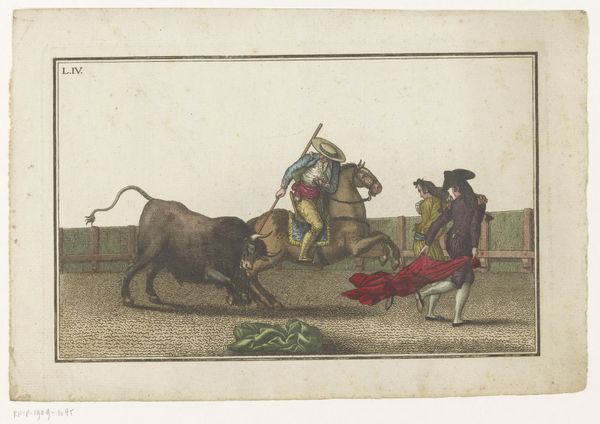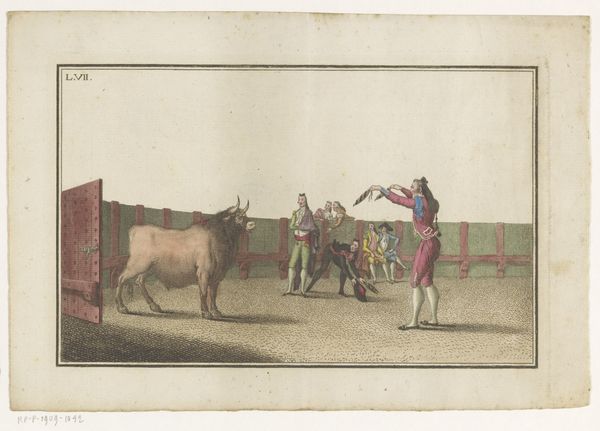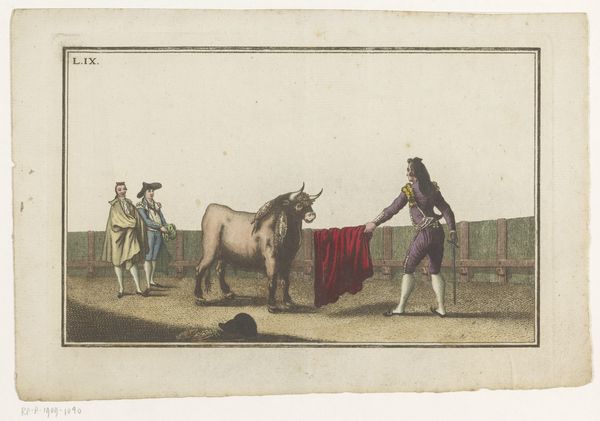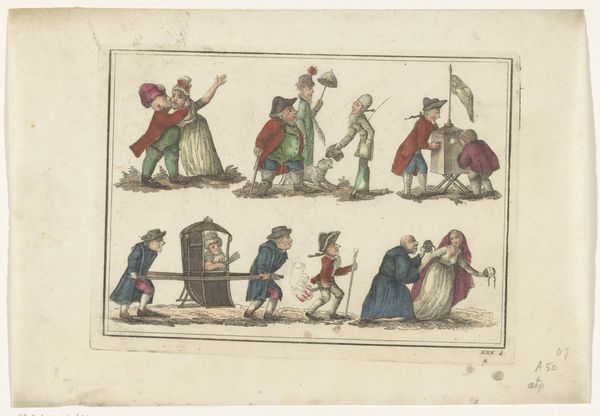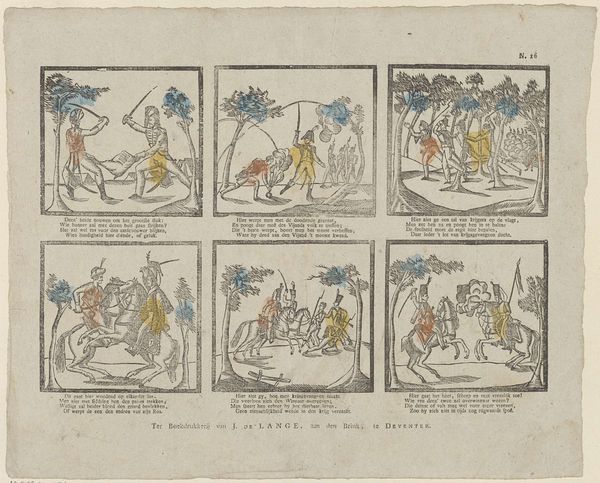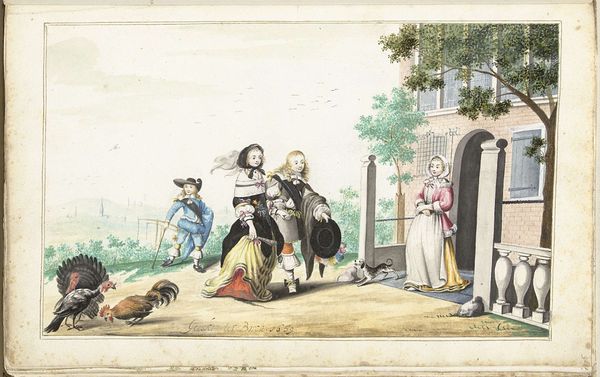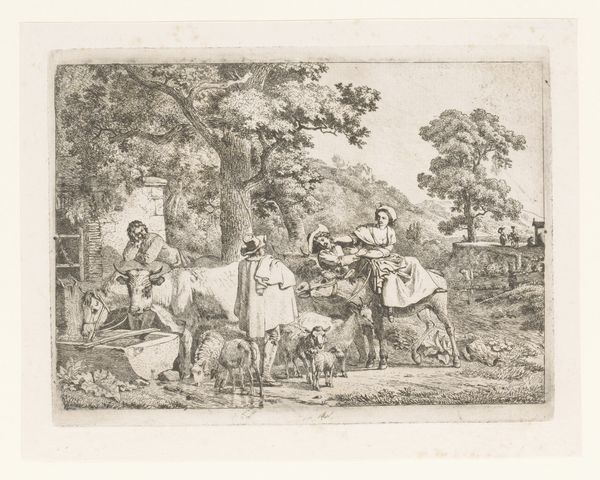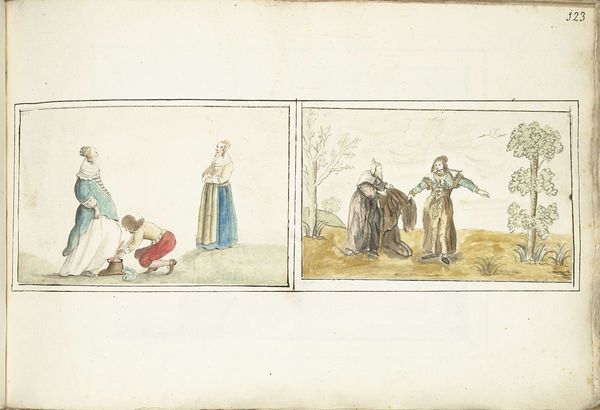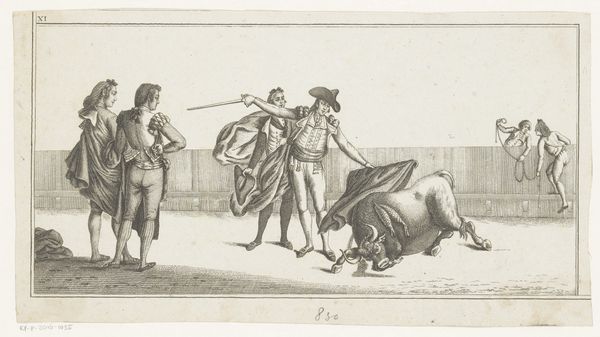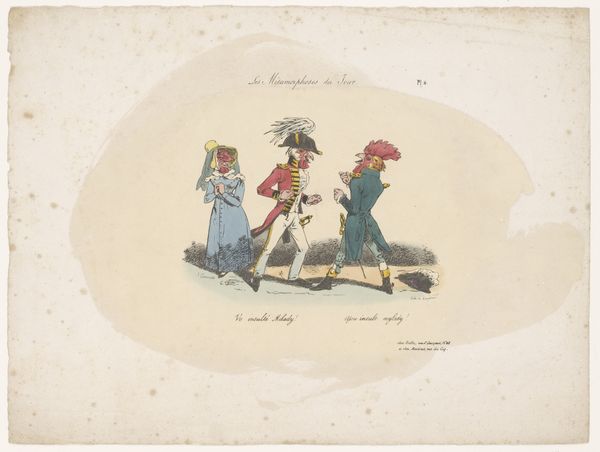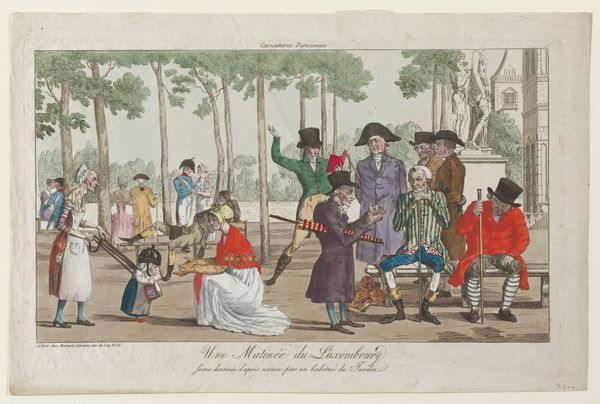
Dimensions: height 188 mm, width 276 mm
Copyright: Rijks Museum: Open Domain
Curator: This print from 1795, found in the Rijksmuseum, is titled "Stier gestoken door een matador," or "Bull Stabbed by a Matador". It is attributed to Luis Fernandez Noseret, and created using engraving techniques. Editor: Gosh, that’s intense. The scene feels staged, almost like a dark little puppet show. There's this odd mix of vibrant clothing against such violence... it’s unsettling, like witnessing a drama with miniature figures in a dream. Curator: Well, the technique of engraving and printmaking allowed for dissemination of images of bullfighting, and enabled commentary about Spanish society and traditions across a broader audience. The controlled lines reflect the period’s interest in order. It’s a popular genre, reflecting broader debates on cultural identity and practices. Editor: True, you can feel the rigidity in how the figures are placed. And those onlookers near the fence – it is like a carefully arranged tableau, highlighting spectacle and hierarchy, while the fallen bull offers a grim counterpoint. I wonder about the artist's intent here... are they glorifying or criticizing? It teeters on the edge, doesn't it? Curator: It is intriguing how you immediately recognize that. One way to look at that is to acknowledge the relationship between consumer demand and artisanal labor, between spectacle, tradition, and their documentation. Each figure in the arena is a piece of that economic exchange as well. Editor: Yes, thinking of this work as both a product and process changes the entire experience. There’s a disconnect seeing something so inherently violent and then connecting it with the meticulous creation involved, like a chef carefully plating a meal that ends up consumed so carelessly. Curator: That is a fantastic analogy! The circulation of prints like these created an artistic marketplace around such traditions, reinforcing the rituals, yet also permitting space to consider how the materiality, the distribution of an artwork contributes meaning and ultimately challenges the boundaries between art and everyday life. Editor: Beautiful. So this piece, seemingly a straightforward depiction, acts as this layered historical mirror. Not just showing us a bullfight, but a conversation on class, craftsmanship and culture, wouldn't you say? Curator: Precisely. Seeing through that lens adds nuance. Editor: Indeed. Thanks, that insight helped shift my initial unease into real appreciation.
Comments
No comments
Be the first to comment and join the conversation on the ultimate creative platform.
